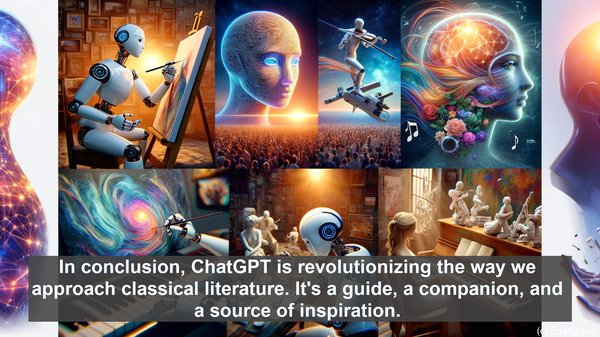Introduction: Unveiling the Potential of ChatGPT
Greetings, literature enthusiasts! In this article, we’re excited to introduce you to ChatGPT, an AI-powered guide that’s transforming the way we explore classical literature. With its vast knowledge and insightful analysis, ChatGPT is like having a knowledgeable companion by your side as you embark on your literary journey.
Enhancing the Reading Experience: ChatGPT’s Unique Features
One of the remarkable aspects of ChatGPT is its ability to provide contextual explanations. Whether you’re encountering complex language or cultural references, ChatGPT can offer instant clarity, making the reading experience more immersive and enjoyable. Additionally, it can provide historical context, shedding light on the socio-political climate of the time, thereby enriching your understanding of the text.
Beyond the Surface: Deep Dive into Themes and Symbolism
Classical literature is often layered with symbolism and thematic depth. While these elements can be captivating, they may also be elusive to grasp fully. This is where ChatGPT’s expertise shines. By engaging in thoughtful discussions, it can unravel the intricate web of symbols and themes, revealing the author’s intentions and adding new dimensions to your interpretation.

A Collaborative Approach: ChatGPT and the Reader
ChatGPT isn’t just a passive informant; it’s a collaborative partner. It encourages readers to ask questions, share their insights, and even propose alternative interpretations. This interactive aspect fosters a dynamic learning environment, where the reader’s perspective is valued, and new ideas can flourish.

The Limitations: Acknowledging the Boundaries
While ChatGPT is undoubtedly a valuable tool, it’s essential to acknowledge its limitations. As an AI, it lacks the human touch, the subjective nuances that come with personal experiences. It’s crucial to balance the insights provided by ChatGPT with your own reflections, creating a harmonious blend of perspectives.
